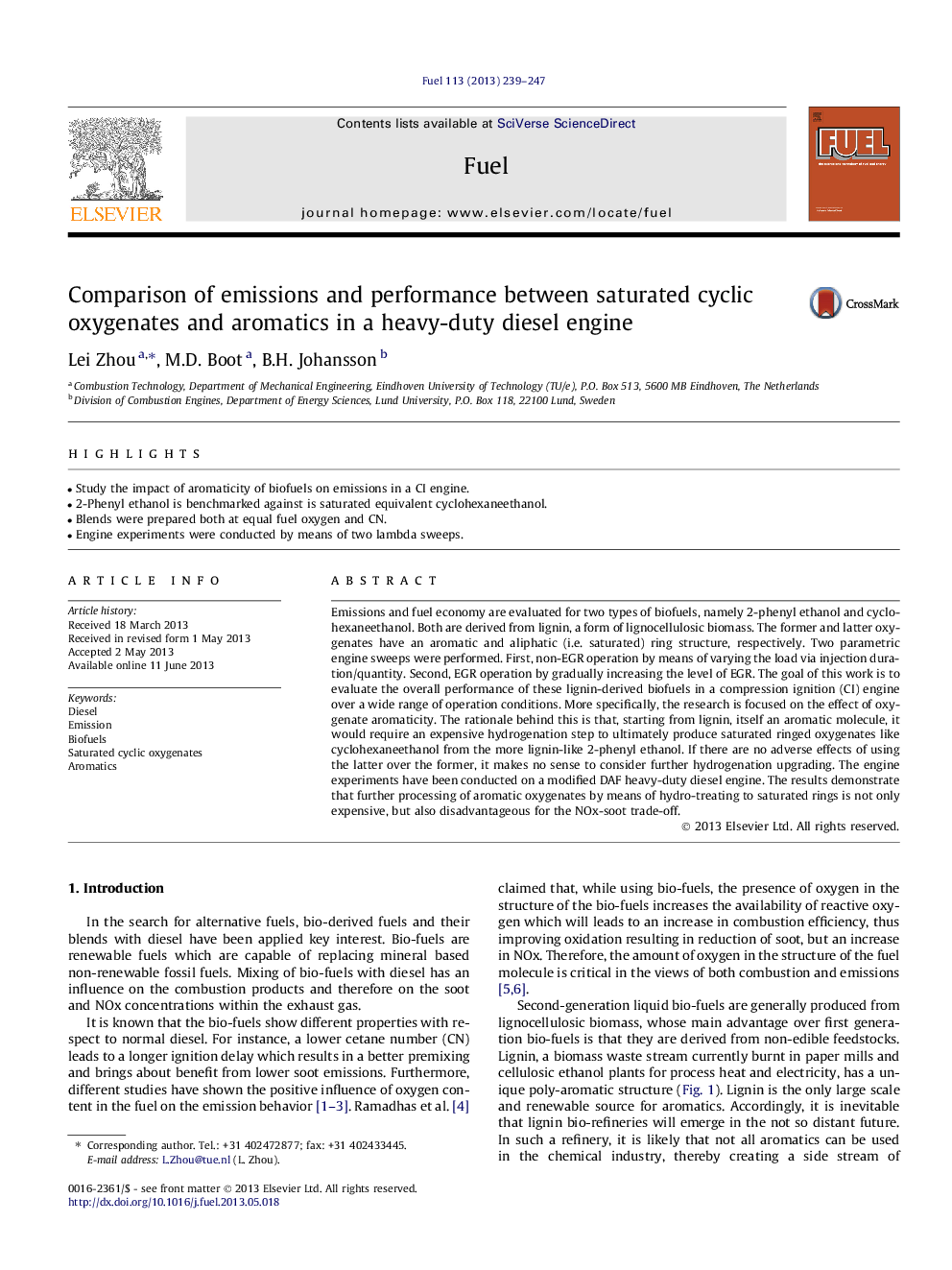| کد مقاله | کد نشریه | سال انتشار | مقاله انگلیسی | نسخه تمام متن |
|---|---|---|---|---|
| 6639803 | 461153 | 2013 | 9 صفحه PDF | دانلود رایگان |
عنوان انگلیسی مقاله ISI
Comparison of emissions and performance between saturated cyclic oxygenates and aromatics in a heavy-duty diesel engine
ترجمه فارسی عنوان
مقایسه میزان انتشار و عملکرد بین اکسیدانهای سیکل اشباع شده و آروماتیک در یک موتور دیزلی سنگین
دانلود مقاله + سفارش ترجمه
دانلود مقاله ISI انگلیسی
رایگان برای ایرانیان
کلمات کلیدی
دیزل، انتشار، سوخت های زیستی، اکسیژنهای سیکل اشباع شده، معطر
موضوعات مرتبط
مهندسی و علوم پایه
مهندسی شیمی
مهندسی شیمی (عمومی)
چکیده انگلیسی
Emissions and fuel economy are evaluated for two types of biofuels, namely 2-phenyl ethanol and cyclohexaneethanol. Both are derived from lignin, a form of lignocellulosic biomass. The former and latter oxygenates have an aromatic and aliphatic (i.e. saturated) ring structure, respectively. Two parametric engine sweeps were performed. First, non-EGR operation by means of varying the load via injection duration/quantity. Second, EGR operation by gradually increasing the level of EGR. The goal of this work is to evaluate the overall performance of these lignin-derived biofuels in a compression ignition (CI) engine over a wide range of operation conditions. More specifically, the research is focused on the effect of oxygenate aromaticity. The rationale behind this is that, starting from lignin, itself an aromatic molecule, it would require an expensive hydrogenation step to ultimately produce saturated ringed oxygenates like cyclohexaneethanol from the more lignin-like 2-phenyl ethanol. If there are no adverse effects of using the latter over the former, it makes no sense to consider further hydrogenation upgrading. The engine experiments have been conducted on a modified DAF heavy-duty diesel engine. The results demonstrate that further processing of aromatic oxygenates by means of hydro-treating to saturated rings is not only expensive, but also disadvantageous for the NOx-soot trade-off.
ناشر
Database: Elsevier - ScienceDirect (ساینس دایرکت)
Journal: Fuel - Volume 113, November 2013, Pages 239-247
Journal: Fuel - Volume 113, November 2013, Pages 239-247
نویسندگان
Lei Zhou, M.D. Boot, B.H. Johansson,
